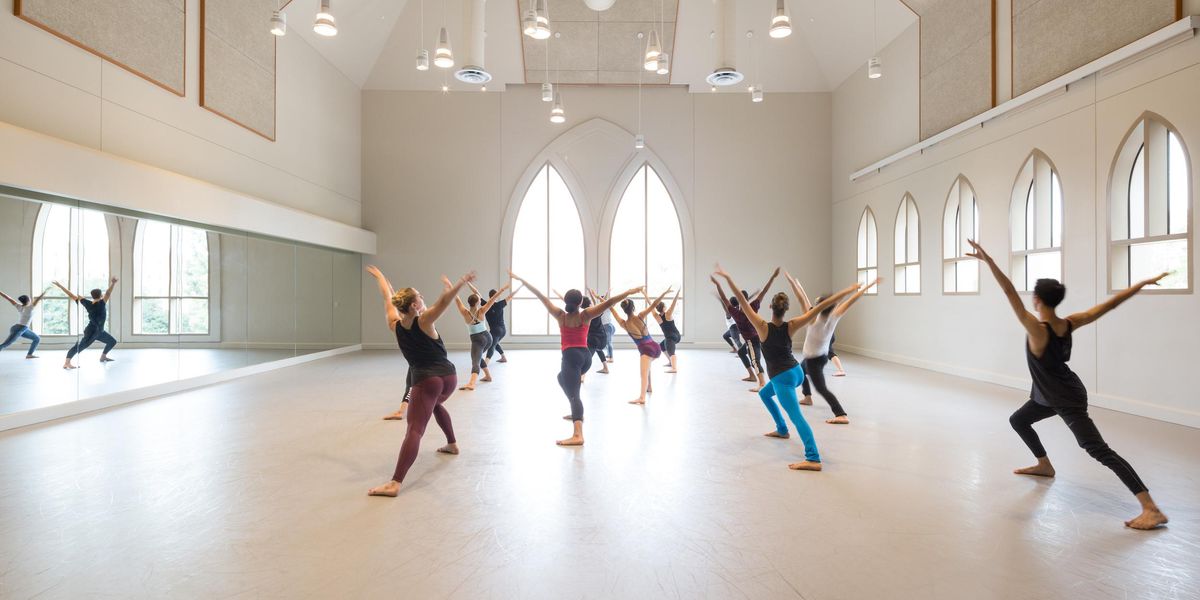Remy Charlip (1929–2012)
Remy Charlip. Photo by Lois Greenfield, Dance Magazine Archives.
Call him the court jester of post-modernism. Remy Charlip, beloved internationally for his innovative dances, charming children’s literature (38 books in all), and theater pieces based on his books, died on August 14 in San Francisco. He was 83.
Born in Brooklyn to Russian immigrants, Charlip attended Cooper Union, but soon stopped painting and began taking dance classes. “I thought dancers were free spirits,” he told Jennifer Dunning of The New York Times in a 1977 interview. “The one way I could be a free spirit was to study dance. Little did I know how tyrannical and puritanical they were.” He trained with Irving Burton and danced professionally with Donald McKayle, Jean Erdman, and Katherine Litz.
At Black Mountain College in 1953, he became an original member of the Merce Cunningham Dance Company and its first costume designer. While the company struggled in those early years, Charlip kept himself afloat by designing book jackets and writing children’s books that won many awards, including Fortunately, Thirteen (a book that prefigured the complexity of hypertext), and Arm in Arm. His direction of the play A Beautiful Day at Judson Poets Theater won an Obie in 1966.
Nocturne, by Merce Cunningham, ca. 1956, with Charlip in center. Viola Farber is at left, Cunningham at right, Carolyn Brown between Charlip and Cunningham. Photo by Louis Stevenson, DM Archives.
The same year he made a solo, Meditation, in which he changed his facial expression in slow motion to music by Jules Massenet of the same title. He later set this piece on Maximiliano Zomosa of the Joffrey Ballet.
Charlip in
Meditation (1966), probably from Bennington College Judson Project reconstructions at Danspace, 1982. Photo from DM Archives.
Charlip was a founder of the Obie-winning Paper Bag Players, a dance/theater group that performed for children, and worked with the National Theater of the Deaf. His pieces have been performed by dance companies all around the world, as well as at the Joyce Theater, the Brooklyn Academy of Music, and on public television.
A certified Alexander Technique teacher, he wrote extensively about it, with copious illustrations, in Contact Quarterly. According to fellow Alexander practitioner June Ekman, he improvised on the Alexander visualizations and talked often about figure 8’s in the body. He sometimes said he was always “rearranging my internal furniture.”
Barbara Roan and Ron Dabney in
Alone Some and Twosome, a duet by Charlip, early 1980s, DM Archives.
In 1983, Charlip choreographed a procession of 250 dancers of all ages, each bearing one of his trademark towels, crossing the Brooklyn Bridge in celebration of its centennial year. So successful was the event that it inspired the creation of the non-profit organization Dancing in the Streets; founder Elise Bernhardt had encountered Charlip and Ekman at Sarah Lawrence College, where Charlip chaired the department of Children’s Literature and Theatre from 1967 through 1971, and was often a guest artist afterward. He also taught at Yale, Bennington, Bates, Hofstra, and Harvard.
Charlip began creating Air Mail Dances in 1971, when, having forgotten to choreograph a promised dance for a New York friend, Nancy Lewis, he sent her a series of postcards from Paris on which he’d drawn pictures of the body in various positions. He told her she could dance the drawings in any order she chose. Critic Marcia B. Siegel used later versions of the Air Mail Dances in her graduate classes at NYU’s Department of Performance Studies. “They were so clear,” she says. “I had a lot of fun with them.” His illustrations graced T-shirts and note cards sold to support Dancers for Disarmament, a group active in 1980s New York. His “Dance in a Bed,” a lovely study performed by Toby Armour and many others, can be found on YouTube.
Charlip moved to San Francisco in 1989 and was adopted by a whole new community of dancers and artists, whom he mentored and who rallied to care for him after a severe stroke in 2005. Brian Selznick, who wrote The Invention of Hugo Cabret, the novel adapted for the Oscar-winning film Hugo, used his own drawing of Charlip as the model for Georges Méliès, played in the film by Ben Kingsley.
Celebrations of Charlip’s life were held in New York and at ODC in San Francisco on August 19; a memorial is scheduled for October 21, from 5:00 pm to 7:00 pm, at Judson Memorial Church. For more information, contact June Ekman at [email protected]. —Elizabeth Zimmer




